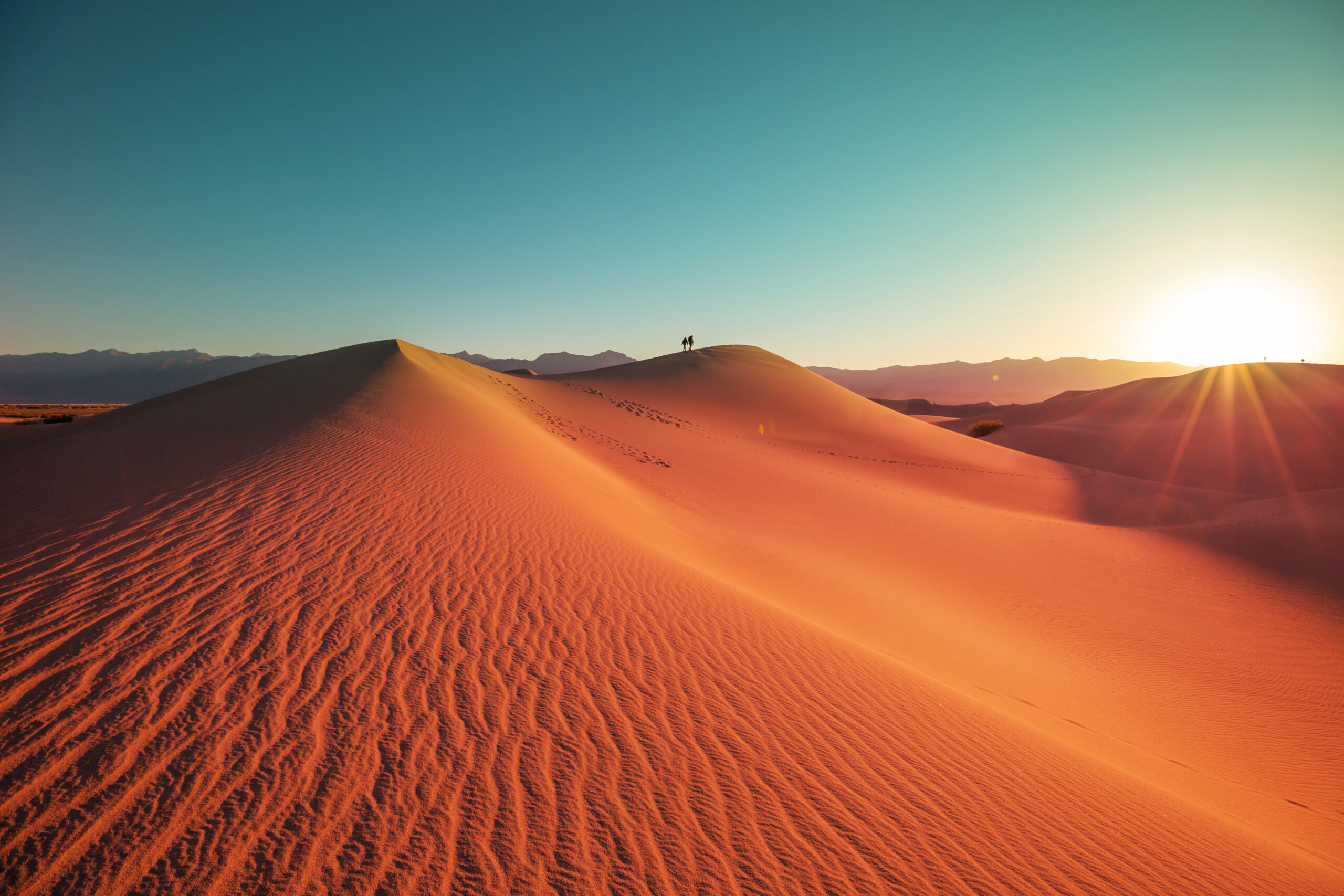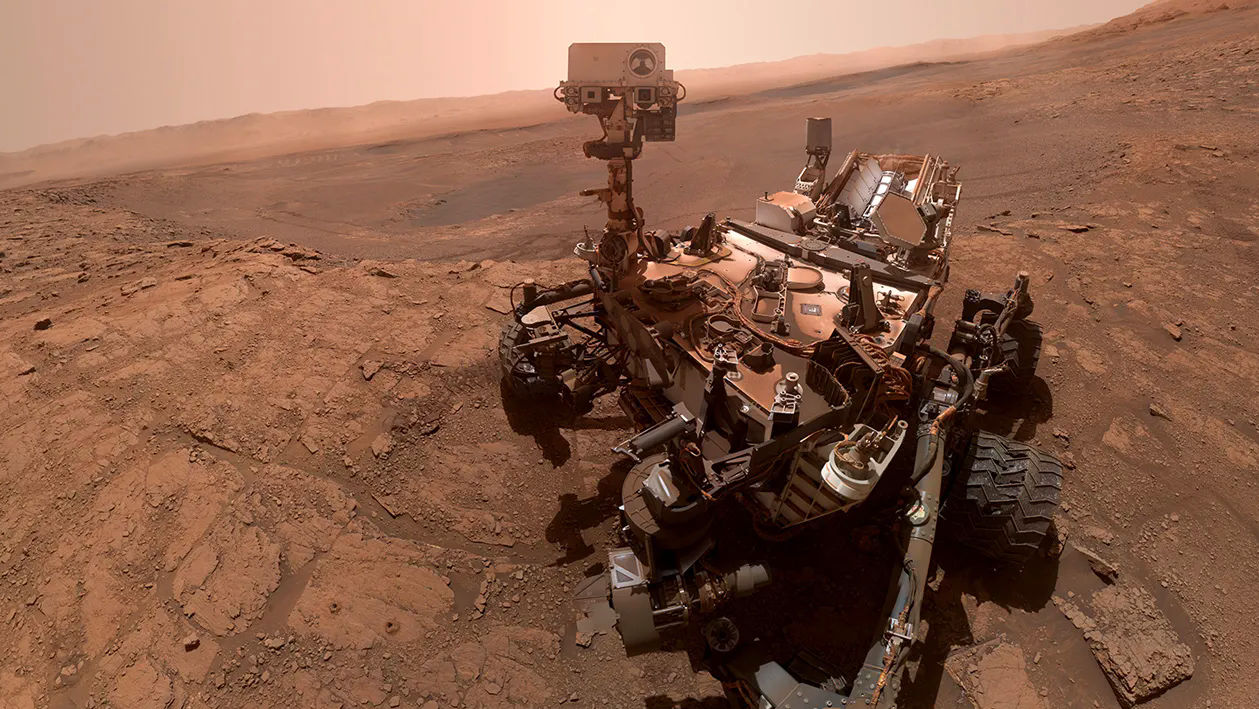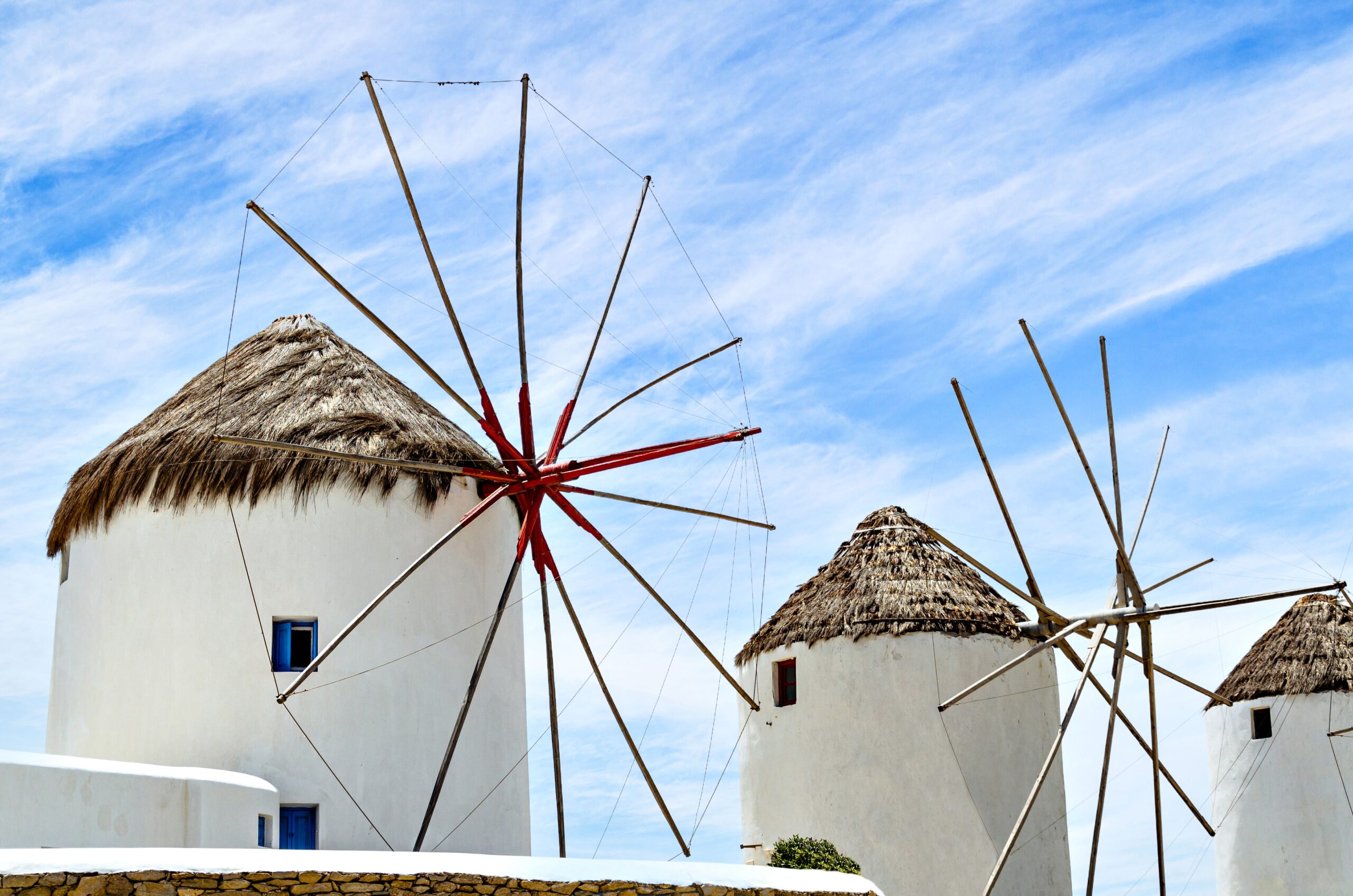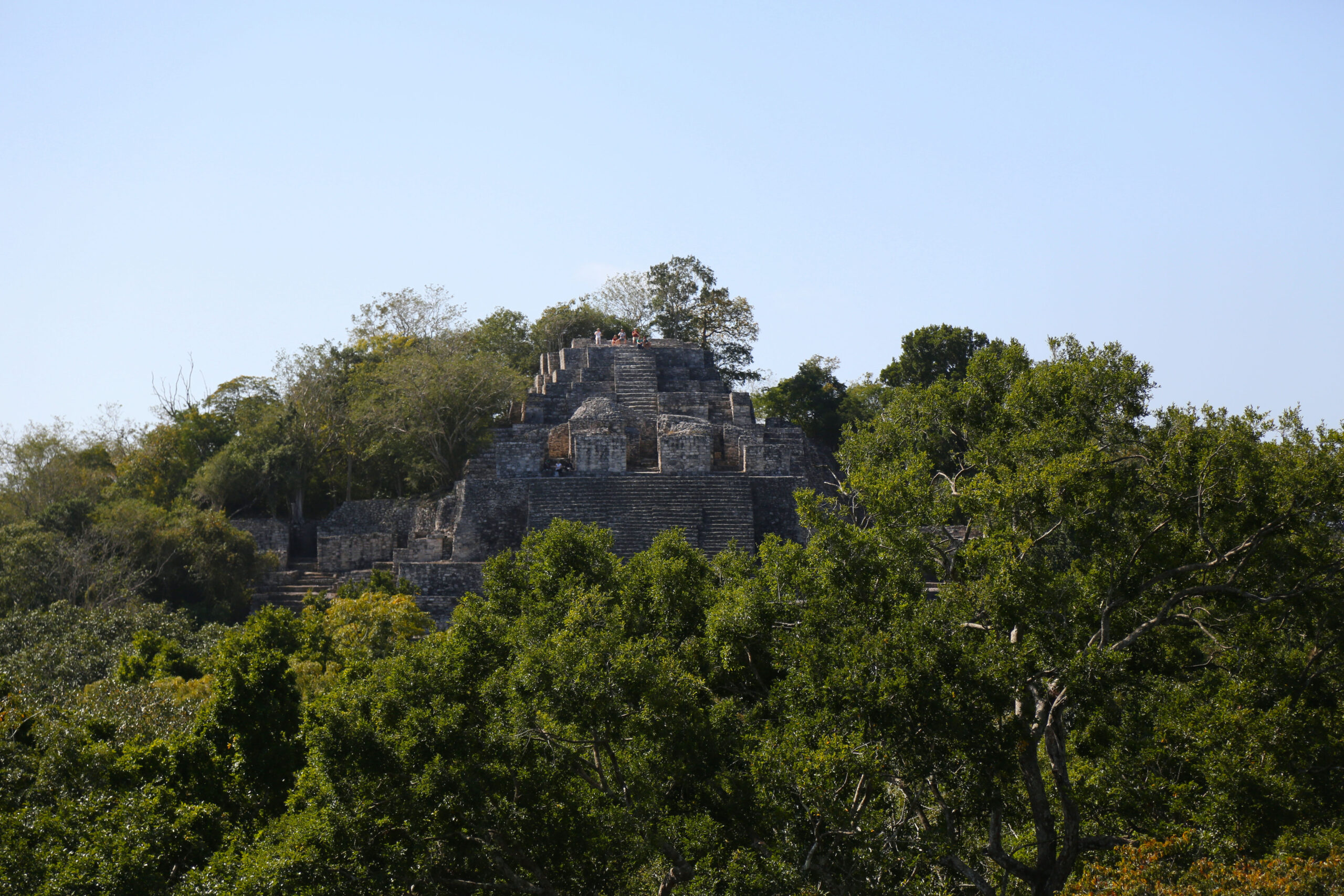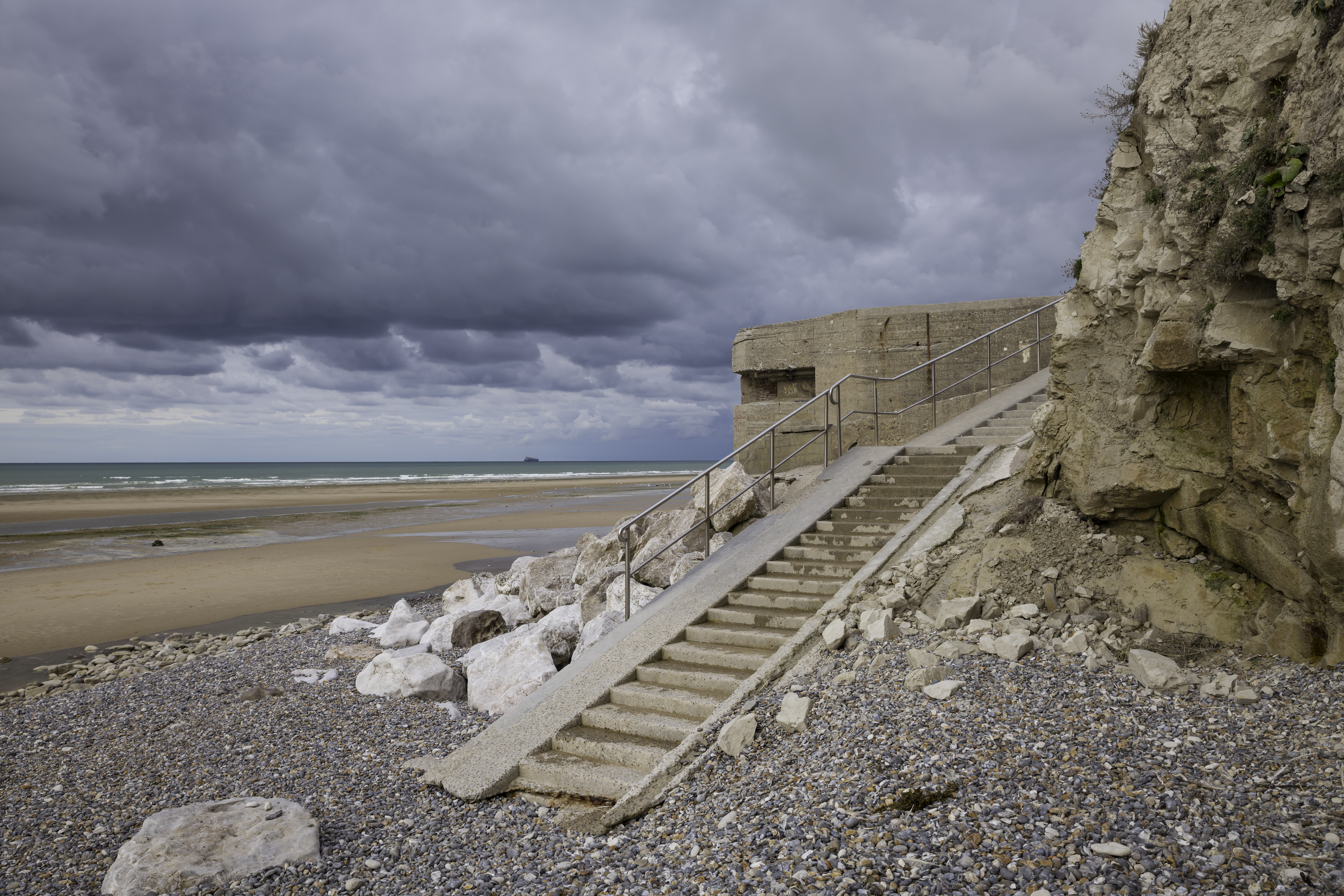Water. Without it, life cannot exist. The places on our Earth denied it, are empty, barren places. And yet even these have a stark, almost unearthly beauty. They are the hottest regions on our planet. They have been the setting for legendary civilisations of the past. And today, against all expectations, they possess large, highly developed cities. Where heat and water are in extreme imbalance… These are the hot and dry deserts of Planet Earth
Description and Dynamics
In the first three chapters of this series we’ve been looking at the climates of the Tropics, the central band of the earth around the equator. We now journey out of this zone, heading towards the poles, but first we must pass through the barrier of remarkably aridity, the zone of the hot deserts.
Why do these bands of dryness exist? The main reason is to do with the way in which hot and cold air hold onto moisture, and how this is tied into the greater cycle of air movement in the Tropics. In the equatorial region, intense solar radiation leads to heating of warm moist air, which lifts up high into the atmosphere, depositing most of its moisture as rain as it cools. But this air has to go somewhere. In fact, it moves out toward the poles. And it must come down to earth again. And in the places where it does, we get deserts. This is because this air is mostly empty of moisture, but also because it is going from the cool upper atmosphere, to the heat near the ground. Warm air can hold onto more moisture than cold, so any moisture in this descending air remains locked in, and won’t produce rain.

Solar heating near the equator produces thermals that lose their moisture as rain

Tropical uplift of air must go somewhere so it moves out toward the poles

The now dry air from the tropics falls down in subtropical areas that, denied rain, lead to deserts
These huge and heavy descending columns of air generate high pressure, which causes further heating of the air through compression. In combination with the constant sun, this causes the highest temperatures to be found anywhere on earth, even more than in the tropics. And the high pressure regions keep out storms or other atmospheric disturbances. In short the air is very stable, producing cloudless, sunny skies, very high temperatures, and little to no rain.

The Hadley Cell of Tropical and Subtropical air circulation explains Tropical Rainforest, Tropical Wet & Dry and Hot Desert climates
Most of this air then re-circulates back down to the equator where it forms the Trade Winds that I spoke about in Chapter 2. This whole circular airflow is known as a Hadley Cell. It explains how the Tropical Rainforest, Monsoon, Savannah and Deserts are produced, and is one of the great Secrets of World Climate to be revealed.
There are other places on earth with little to no rain – what we’d call the cool deserts, such as the Gobi or Atacama. But the mechanism of those is different to described here, and we’ll pick these up in a later chapter.
In hot and dry climates, there are two main classifications within the Koppen system, distinguished simply by how little rain falls.
BWh, the true hot desert, has the least amount of rain, while BSh, known as hot semi-arid, or hot steppe, has some rain, but not enough to produce anything more than stunted, shrub like vegetation.
There are basically two seasons in these climates, defined principally by temperature, since rain doesn’t feature significantly, or indeed at all. They are a long, very hot summer, and a shorter mild or cool winter. The seasonal variation in temperature depends upon latitude and how far away from the ocean the place is. Places further away from the equator or ocean have greater seasonal variation than those that are closer to one or the other. Compare, for instance the graph of Baghdad to Mogadishu – two desert cities you’ve probably heard of, but for all the wrong reasons. Baghdad is pretty far from the equator – 33 degrees to be precise, and far from any ocean, and has a pretty extreme summer to winter range. While Mogadishu on the Indian Ocean coast of Somalia, and only 2 degrees north of the equator experiences very little seasonal temperature differences. Deserts in general also feature high day/night changes in temperature – this is because the air is dry and so holds little heat when the sun goes down. That, and the lack of cloud cover too, which would otherwise keep heat in.

Global Distribution of Hot Desert Climate Zones
Where in the World Do We Find the Hot Desert Climate Zones?
So where in the world do we find significant areas of hot and dry conditions? Starting in the Americas, we have the Mojave desert of the Southwest US, covering inland areas of Southern California, Southern Nevada and much of Arizona. This desert region continues south into north-west Mexico, where it becomes the Sonora desert, plus all of the Baja peninsula. Another desert, the Chihuahuan, covers much of north-east Mexico.
In South America, we most notably have the extremely dry coastline of Peru which experiences a great deal of fog due to the cold ocean current that brushes that shoreline. Then there is the Chaco of north-west Argentina.
Moving on to Africa, and here we have the largest and most famous desert of all – the Sahara. Stretching across the entire northern continent, this desert is larger than all the others combined. This enormous region of aridity extends into the Middle East, where it encompasses the entirety of the Arabian Peninsula, south into the Horn of Africa, and further east into southern Iran, Pakistan, ending in the Thar Desert of west India.
In Southern Africa, we have the large Namib desert, which also experiences extensive coastal fogs. This desert extends inland where it becomes the Kalahari.
Lastly we come to Australia, where the vast majority of that island continent is covered by desert or semi-arid conditions. The “Red Heart” of Australia it encompasses many named deserts such as the Great Sandy, Victoria and Gibson.
Landscapes and Biomes

Sand dunes in Dubai

Cacti in Arizona
So what kind of landscapes and vegetation do we find in the hot and dry climates? Well, not much, when it comes to vegetation. But this lack, exposes the earth underneath, and is one of the few places where we get to see the rocky “bones” of our planet. In the absence of binding plants and soils, winds pulverise the rock into grains of sand, and these sands can be gathered by those winds into vast dunes. So true deserts are a mix of exposed rock, baked earth and dunes.

Climate graphs of notable cities in Hot Desert climate regions
Where there is some rain, the plants that do exist are hardy shrubs that are spaced out with bare earth between. And of course, there are cacti. Uniquely suited to a climate where it might only rain once every few years, these iconic desert plants have evolved to hold onto moisture for years within their tough, fleshy bodies.
Notable Cities
Considering water is so short in these regions, there are a surprising number of large cities contained within the Hot Deserts, and these are provided in the adjacent chart.
Coursework Questions
- How does the uplift of tropical air at the equator relate to the formation of hot deserts in subtropical regions?
- What is the Hadley Cell and what role does it play in determining various climatic conditions in tropical and subtropical regions?
- Explain why hot deserts, despite being at higher latitudes, can have higher temperatures than equatorial regions.
- Why is it that some coastal areas of hot deserts feature frequent fogs?
- What are the Koppen codes for these climates? How do they differ from each other?
- What types of natural landscapes do we find in hot deserts?
- Name five hot deserts and describe their location.
- List out some countries and cities that experience hot desert climates.
